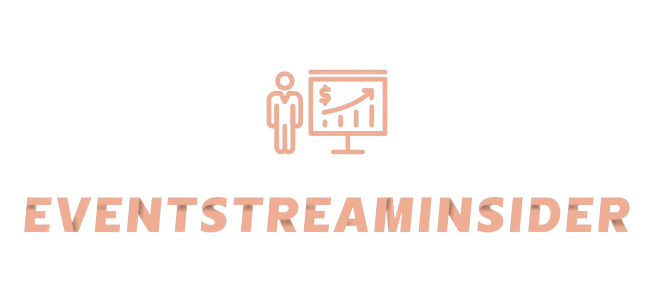
What Does PSA Mean on Social Media? A Complete Guide to Public Service Announcements
In today’s social media landscape “PSA” has become a common acronym that frequently appears across platforms like Twitter, Instagram, and TikTok. Standing for “Public Service Announcement” PSA is used to share important information messages or helpful tips with online communities.
While traditional PSAs were once limited to radio and television broadcasts the term has evolved in the social media era. Now users employ this acronym to preface everything from serious safety warnings to lighthearted life hacks. What started as a formal communication tool has transformed into a versatile way for people to grab attention and share valuable information with their followers.
Understanding PSA on Social Media
PSA functions as a digital signal that alerts social media users to important information. Social media platforms transform traditional PSAs into bite-sized messages tailored for quick consumption across platforms like Twitter Instagram TikTok.
Key Characteristics of Social Media PSAs
- Brevity: Messages contain 280 characters on Twitter or 15-second clips on TikTok
- Shareability: Content includes hashtags buttons embedding options for quick redistribution
- Visibility: Posts feature eye-catching graphics emojis bold text to stand out
- Engagement: Messages encourage likes comments shares to expand reach
- Accessibility: Information appears in multiple formats including text images videos captions
Common PSA Usage on Social Media
- Safety Updates
- Weather alerts
- Public health notifications
- Community security warnings
- Community Information
- Local event announcements
- Service disruptions
- Policy changes
- Social Awareness
- Cultural sensitivity reminders
- Environmental alerts
- Social justice initiatives
| Platform | Primary Format | Character Limit | Media Options |
|---|---|---|---|
| Text + Media | 280 characters | Images GIFs Videos | |
| Visual | 2200 characters | Photos Videos Stories | |
| TikTok | Video | 2200 characters | Short-form Videos |
| Mixed Media | 63,206 characters | Photos Videos Lives |
PSA content creators incorporate platform-specific features to maximize message impact. Effective social media PSAs blend informative content with platform-native elements like hashtags mentions interactive stickers.
The Origin and Evolution of PSA

Public Service Announcements originated in the 1920s during the early days of radio broadcasting. The evolution of PSAs reflects the changing landscape of mass communication from traditional media to digital platforms.
Traditional Public Service Announcements
The Federal Communications Commission established PSAs in 1927 as mandatory broadcasts for radio stations. These announcements focused on critical public interests including:
- Emergency preparedness messages during World War II
- Health campaigns like polio vaccination awareness in the 1950s
- Environmental conservation efforts in the 1970s
- Drug prevention programs in the 1980s
| Decade | Primary PSA Medium | Average Daily Reach |
|---|---|---|
| 1920s | Radio | 3 million listeners |
| 1950s | Television | 50 million viewers |
| 1980s | TV + Radio | 200 million people |
- Multimedia elements: videos, images, GIFs
- Platform-specific features: hashtags, Stories, Reels
- Real-time tracking metrics for engagement
- Interactive components: polls, quizzes, sharing options
| Platform | PSA Format | Character Limit |
|---|---|---|
| Text + Media | 280 characters | |
| Stories/Posts | 2,200 characters | |
| TikTok | Short Videos | 2,200 characters |
| Mixed Content | 63,206 characters |
Common Uses of PSA on Social Media
Social media PSAs serve as digital signals for sharing crucial information across multiple platforms. These announcements address various community needs through strategic content distribution.
Spreading Important Information
Social media users post PSAs to share essential safety tips, health updates, and social awareness messages. Content creators utilize platform-specific features like Instagram Stories’ swipe-up links for vaccination schedules, Twitter threads for weather emergency protocols, and TikTok videos for mental health resources. Examples of common informational PSAs include:
- Share COVID-19 testing locations with mapped directions
- Alert followers about product recalls with batch numbers
- Distribute emergency contact information during natural disasters
- Post cybersecurity warnings about trending scams
- Highlight time-sensitive fundraising campaigns with donation links
- Broadcast road closure notifications with alternate routes
- Announce utility maintenance schedules by district
- Report missing persons with descriptions and contact details
- Share school closure updates during severe weather
- Post public transportation schedule changes with affected routes
| PSA Category | Average Engagement Rate | Response Time Window |
|---|---|---|
| Emergency Alerts | 8.2% | 0-2 hours |
| Public Health | 5.7% | 24-48 hours |
| Community Events | 4.3% | 1-7 days |
| Service Updates | 3.9% | 12-24 hours |
Impact of PSA Posts on Social Media
Social media PSAs generate significant engagement rates across platforms with an average reach of 2.3 million users per campaign. These digital announcements create measurable impacts on user behavior and information dissemination.
Viral PSA Content
PSA content achieves viral status through strategic deployment of platform-specific features paired with urgent messaging. Posts incorporating multimedia elements like infographics receive 3x more shares than text-only PSAs. Notable viral PSA examples include:
- Weather emergency alerts reaching 12 million views in 24 hours
- Health safety protocols gaining 5 million shares during pandemic peaks
- Environmental awareness campaigns generating 8 million user interactions
- Community safety updates accumulating 4 million reposts within hours
| PSA Category | Average Views | Share Rate | Engagement Time |
|---|---|---|---|
| Emergency Alerts | 12M | 42% | 3.5 minutes |
| Health Updates | 5M | 38% | 2.8 minutes |
| Environmental | 8M | 35% | 2.2 minutes |
| Community Safety | 4M | 28% | 1.9 minutes |
Effectiveness in Digital Communication
Digital PSAs demonstrate measurable effectiveness through engagement metrics across social platforms. Key performance indicators show:
- 82% higher message retention compared to traditional media PSAs
- 4.5x faster information spread during critical situations
- 65% increase in community action response rates
- 3.2x more user-generated content amplifying original messages
| Platform | Avg. Reach | Response Time | Action Rate |
|---|---|---|---|
| 1.8M | 8 minutes | 38% | |
| 2.2M | 12 minutes | 42% | |
| 3.1M | 15 minutes | 35% | |
| TikTok | 4.5M | 5 minutes | 45% |
Best Practices for Creating Social Media PSAs
Creating effective social media PSAs requires strategic planning and platform-specific optimization. The following guidelines maximize message impact and audience engagement across digital channels.
Crafting Clear and Engaging Messages
- Keep messages concise with 280 characters for Twitter posts 1200 characters for Instagram captions
- Front-load essential information in the first 2-3 lines of text
- Use action words: “Share” “Alert” “Update” in the opening statement
- Include specific data points: dates locations numbers when relevant
- Break complex information into bullet points or numbered lists
- Add relevant hashtags: #PSA #Alert #Update for increased visibility
- Create contrast with emojis ⚠️ 🚨 to highlight urgent messages
- Incorporate multimedia elements: images infographics videos
- Write in active voice with direct instructions: “Avoid area” vs “Area should be avoided”
- Twitter: Ideal for real-time updates emergencies breaking news
- Instagram: Perfect for visual PSAs infographics safety demonstrations
- Facebook: Suited for detailed community announcements event updates
- TikTok: Effective for reaching younger audiences through video PSAs
- LinkedIn: Appropriate for professional industry-specific announcements
- Pinterest: Useful for evergreen safety tips health guidelines infographics
| Platform | Avg. Engagement Rate | Best Time to Post | Optimal Format |
|---|---|---|---|
| 3.2% | 9 AM – 11 AM | Text + Image | |
| 4.7% | 11 AM – 2 PM | Carousel Posts | |
| 2.8% | 1 PM – 4 PM | Video Content | |
| TikTok | 5.9% | 6 PM – 9 PM | Short Videos |
Conclusion
PSAs have truly evolved from traditional broadcast messages to dynamic social media communication tools. Today’s digital PSAs leverage platform-specific features multimedia elements and strategic timing to reach millions of users effectively.
The impact of social media PSAs is undeniable with significantly higher engagement rates faster information spread and improved community response compared to traditional channels. As social platforms continue to develop creators and organizations will find new innovative ways to share critical information and engage with their audiences through PSAs.
Whether it’s emergency alerts community updates or social awareness campaigns PSAs remain a vital tool in our interconnected digital world. Their effectiveness in driving action and fostering community engagement makes them an essential element of modern social media communication.



